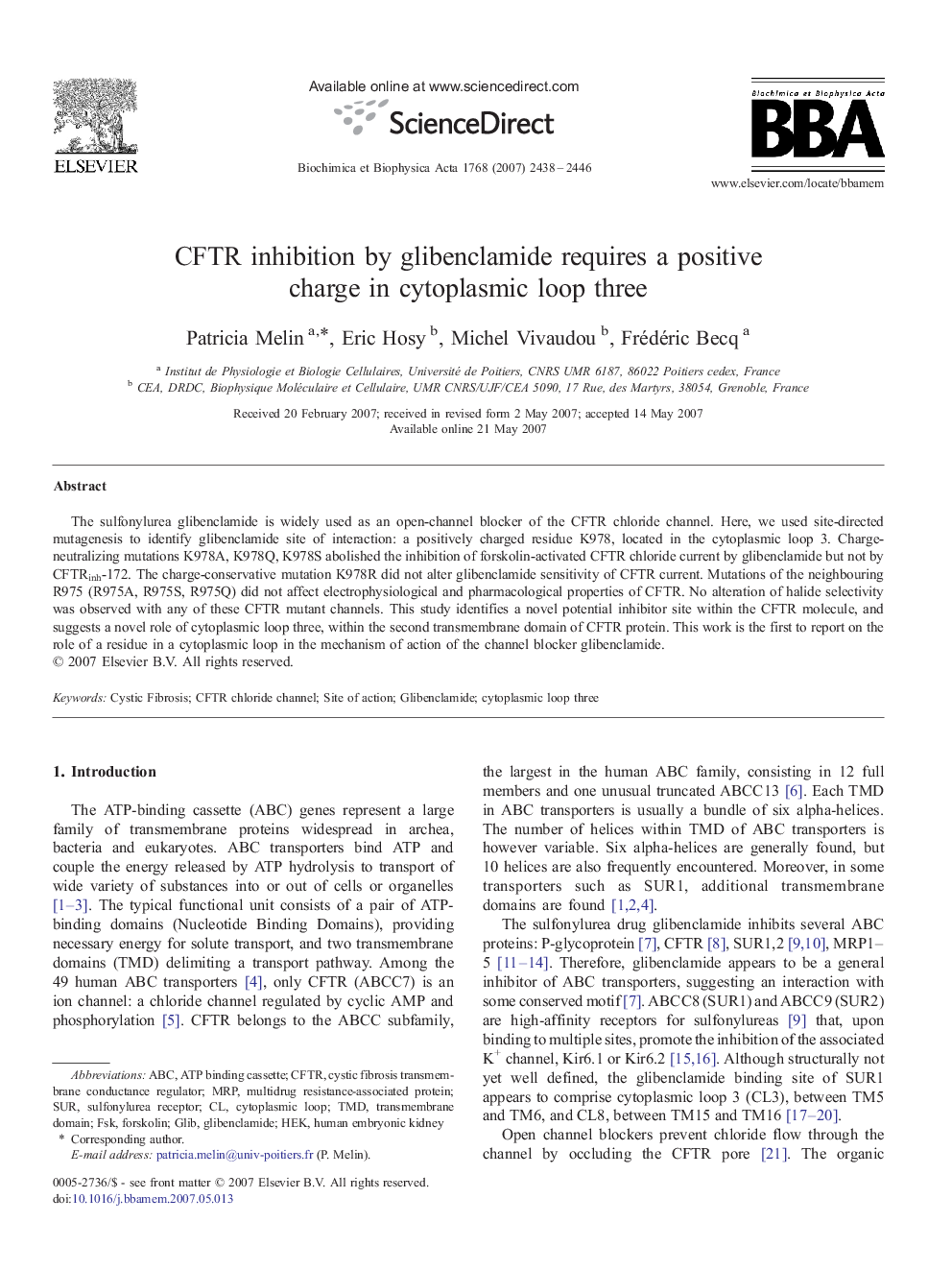| Article ID | Journal | Published Year | Pages | File Type |
|---|---|---|---|---|
| 1945666 | Biochimica et Biophysica Acta (BBA) - Biomembranes | 2007 | 9 Pages |
The sulfonylurea glibenclamide is widely used as an open-channel blocker of the CFTR chloride channel. Here, we used site-directed mutagenesis to identify glibenclamide site of interaction: a positively charged residue K978, located in the cytoplasmic loop 3. Charge-neutralizing mutations K978A, K978Q, K978S abolished the inhibition of forskolin-activated CFTR chloride current by glibenclamide but not by CFTRinh-172. The charge-conservative mutation K978R did not alter glibenclamide sensitivity of CFTR current. Mutations of the neighbouring R975 (R975A, R975S, R975Q) did not affect electrophysiological and pharmacological properties of CFTR. No alteration of halide selectivity was observed with any of these CFTR mutant channels. This study identifies a novel potential inhibitor site within the CFTR molecule, and suggests a novel role of cytoplasmic loop three, within the second transmembrane domain of CFTR protein. This work is the first to report on the role of a residue in a cytoplasmic loop in the mechanism of action of the channel blocker glibenclamide.
